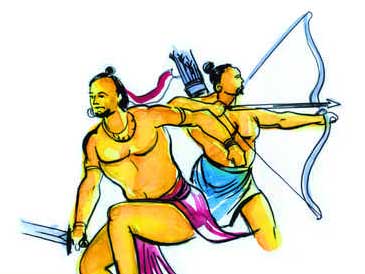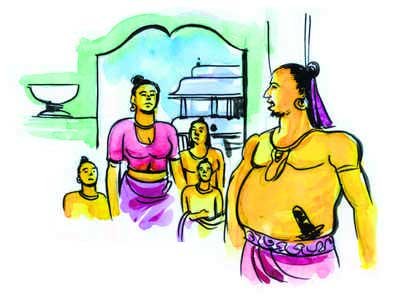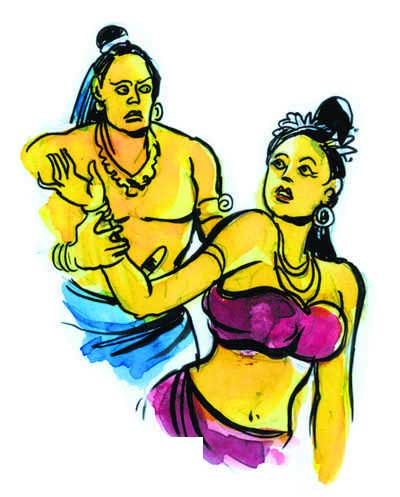
| This article is part of a continuing series on the 'Mahavamsa,' the recorded chronicle of Sri Lankan history The death of the Yuvaraja
1. By nature, King Gajabahu was quite different from his father. He was kind and associated with his subjects very closely. With the intention of building up a peaceful society, he respected the law of the land to its very letter. He punished those officers who had become rich overnight at the expense of the poor – squeezing their wealth. Meanwhile, those who had some sort of power tried to exert themselves. This too was squashed by him. The Velakkara army had been occupying sacred land for some time. But once they joined the enemy, such land became vacant again. 2. King Gajabahu adopted a campaign of cleaning up all the sacred land. He was able to bring them back to their previous sanctity once more. Then he invited the Buddhist monks to come and occupy this land. He patronized religion and was engaged in various meritorious deeds. The people who supported him in battle were well rewarded with various gifts and positions. He appointed the Commander Gokarna as the ruler of the Kalawewa area. Gajabahu is one of the most pious kings of Polonnaruwa. 3. Though the kings of Ruhuna were his enemies, they were his own relations. Among them the Yuvaraja Manabharana was a powerful person. His wife was Ratnavalee, the daughter of Vijayabahu. This couple had two daughters and Parakramabahu was the son. This was the state of affairs around 1140 AD.
4. Prince Parakramabahu displayed signs of bravery from his childhood. He was endowed with extraordinary physical strength. It is during this time that the Yuvaraja Manabharana fell ill. Though he underwent medical treatment, there was no improvement and he passed away. Queen Ratnavalee was now left with the care of the two daughters and the son. She went to Yuvaraja Siri-Vallabha. He gave them the necessary accommodation and protection and looked after them. 5. The area that Manabharana ruled was now left without a ruler. King Kitsirimegha annexed that area too and appointed his representative to rule that part. The person who was appointed was Sanka by name. He had been a warrior who had been fighting in a number of battles. Princess Mitta by this time had grown up to be a pretty damsel. She was a playful, pretty princess. 6. Siri-Vallabha's son was also named Manabharana. He was a handsome prince with a good physique. It was quite natural for him to take a liking to Princess Mitta. The princess too, loved him in return. Before long, the elders got to know of this affair. King Siri-Vallabha did not show any resentment. But Mitta's mother, Queen Ratnavalee, did not approve of this. She had other plans for her daughter.
7. Her intention was to give her daughter in marriage to King Gajabahu. He happened to be a nephew of hers as he was her brother's son. As such he was a first cousin of Princess Mitta. The queen thought that a marriage between Manabharana was not quite suitable. King Siri-Vallabha got to know of the disapproval of the queen. He was angry. His anger was justifiable as Ganabahu happened to be one of their enemies. 8. Siri-Vallabha thought, if King Gajabahu were to get married to Princess Mitta, his strength would increase and that would mean more trouble for Siri-Vallabha. He took a quick decision. Forgetting about all differences, he got Mitta married to Manabharana. Queen Ratnavalee was greatly upset. She became helpless.
|
|| Front
Page | News | Editorial | Columns | Sports | Plus | Financial
Times | International | Mirror | TV
Times | Funday
Times|| |
| |
Copyright
2007 Wijeya
Newspapers Ltd.Colombo. Sri Lanka. |


